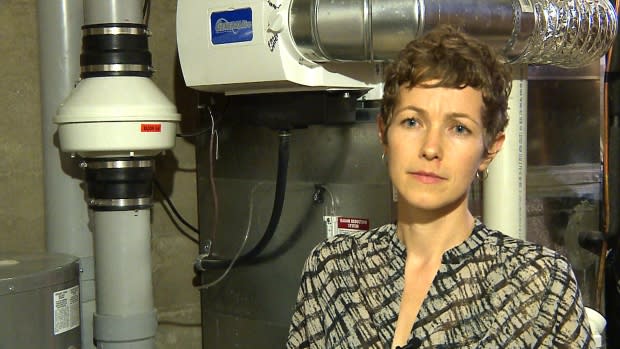Nurse urges Albertans to test after she finds unsafe radon levels in her family's home
Registered nurse Lindsay Snodgrass was shocked to discover dangerous levels of a radioactive gas in her own home. Now, she's urging other Albertans to test their homes for radon.
"Radon is a gas that is everywhere but can accumulate in certain homes to dangerous levels that can increase your risk of causing lung cancer," says Lindsay, who lives with her husband Craig, the mayor of High River, and their young son in the southern Alberta town.
She first learned about the gas in a magazine distributed to medical professionals, and knew immediately she had to check if their family's home was safe.
Radon is an invisible, odourless, tasteless gas that is the leading cause of lung cancer in non-smokers. It's naturally occurring, released by the breakdown of uranium in the soil.
Health Canada says safe levels of radon in indoor air are 200 becquerels per cubic metre or less. Lindsay found levels of more than 300 in her family's bedroom.
"I couldn't go to bed and have that little digital reader and see 350 and have his little lungs breathing that in," she said.
A preliminary study from the University of Calgary has indicated radon might be more prevalent in homes in rural areas, as well as in new homes, but researchers don't yet know why.

"What's dangerous about radon is that it's unstable. In a very short period of time it will decay and precipitate out inside of our lungs," said Dr. Aaron Goodarzi, the Canada research chair for radiation exposure disease and one of the people behind the U of C study.
"As it does that it emits radiation, that damages all the DNA of the cells lining our lungs because we inhale it, and then it precipitates out inside our lungs where it becomes trapped, continuing to emit radiation."
Goodarzi said one Albertan each day is diagnosed with radon-induced lung cancer, and one in six homes in Western Canada have dangerously high radon levels.
He's asking people to sign up for the study and test their homes — not just to discover if they have high radon levels, but to help researchers learn more about the problem.
"Any home, school, workplace property that sits on the soil is potentially at risk for radon. The joke is that only a tree-house is entirely safe," he said.
Simple, but costly fix
The good news is for those who find high radon levels in their homes — it's an easy fix.
The Snodgrasses installed a $3,000 sub-slab depressurization system, which essentially just moves radon-infused air outside the home. It brought the 300 becquerels per cubic metre down to just 30.
"The good news is it's easy to take care of in your home and you should," said Craig Snodgrass.
"Just because you can't see it does not mean it doesn't exist. It's concentrated in our homes where we spend a large part of our lives.… Get your house tested and find out for yourself what the levels of your house are."
Those interested in purchasing a $60 test kit and participating in the U of C study can visit evictradon.ca.

